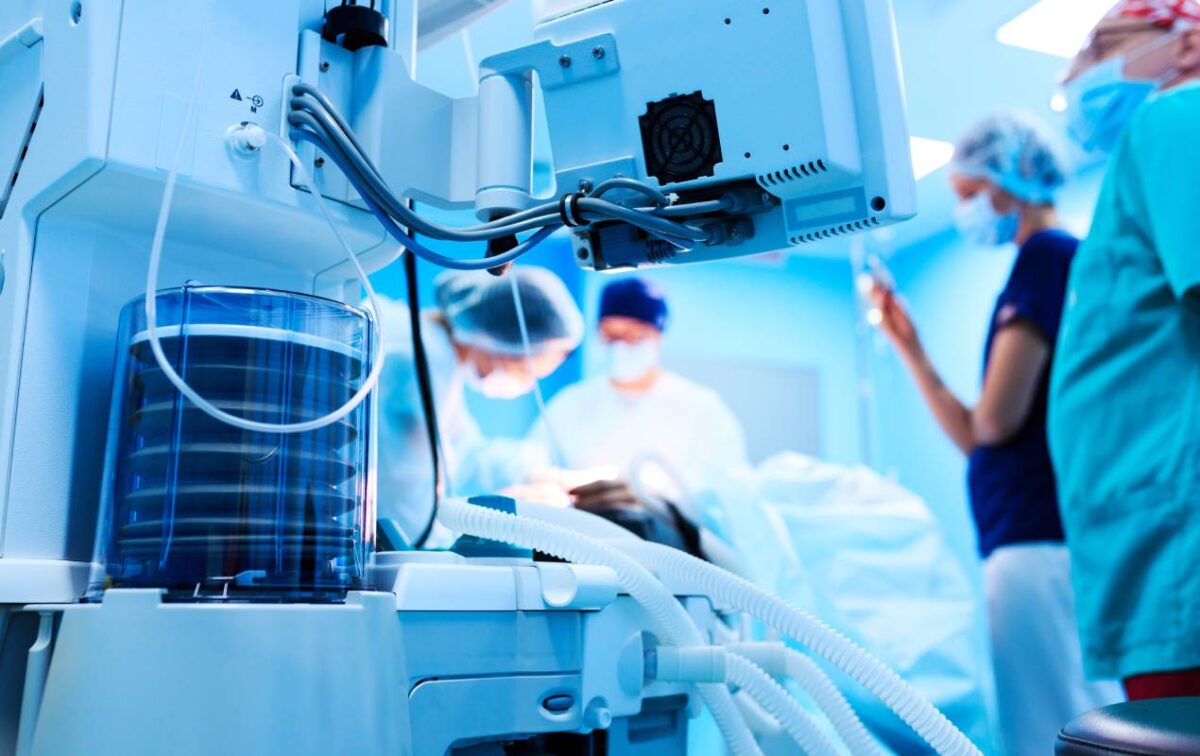Emergence Agitation after General Anesthesia

Emergence agitation is characterized by agitation, confusion, and disorientation in the early phase of recovery from general anesthesia 1. Incidence varies significantly depending on age, anesthetic techniques, and type of surgery, among other factors, with reported rates ranging from <1% to 90%. Emergence agitation is associated with a higher risk of other adverse events, which ongoing research on its risk factors and mitigating interventions is seeking to minimize.
Emergence agitation is most often observed in pediatric patients, and in particular following ear, nose, and throat surgical procedures. One study found that nasal surgery patients in the post anesthesia care unit suffered the most frequently from emergence agitation, possibly due to a sense of suffocation during emergence from anesthesia 3.
Emergence agitation tends to be short (1–15 minutes) and resolve spontaneously. However, it may incur serious consequences, including but not limited to self-extubation, catheter removal, hemorrhage, respiratory depression, and injuries, both to patients and medical staff 4,5. Given its side effects, emergence agitation results in increased medical care costs.
Risk factors linked to emergence agitation include both ends of the age spectrum, male sex, several types of surgery, emergency surgery, longer surgery/anesthesia time, the use of anticholinergics or benzodiazepines, and the use of inhalational anesthetics. Postoperative pain and the presence of invasive devices have also been linked to emergence agitation 6,7. In addition, a recent case-control study identified preoperative cognitive impairment, psychiatric disorders, and obesity as preexisting conditions that increase the risk of emergence anesthesia 8.
Anticipating high-risk patients can help staff provide a safe environment for patients 8. However, eliminating all causative factors, including patients’ pain and anxiety, is the main strategy to minimize emergence agitation. In so doing, any condition that can lead to disorientation (including but not limited to increased intracranial pressure, bladder distention, upper airway obstruction, hypotension, or hypoxia) should be assessed and promptly treated 9. Finally, some research, such as a recent study conducted among pediatric patients, has found that administering propofol near the end of surgery reduced the incidence of emergence agitation 10.
Certain specific surgical contexts also warrant particular interventions. One research study focused on nasal surgery patients identified that administering total intravenous anesthesia rather than sevoflurane, providing adequate postoperative analgesics, and close monitoring helped reduce emergence agitation 1. Research in urological surgical contexts, furthermore, has confirmed that adequate postoperative analgesics and the prevention of catheter-related bladder discomfort are crucial to curbing emergence agitation 11.
However, as highlighted by a recent case report of emergence agitation following an intraoperative neurolytic celiac plexus block, it is critical to correctly dissect the underlying factors of emergence agitation in order to successfully manage patient symptoms on a patient-by-patient basis12.
Emergence agitation following general anesthesia is a common complication. In the future, a better understanding of its risk factors may help develop appropriate models for the provision of adequate prevention strategies and safe care. To this end, further studies are specifically required to assess the efficacy of a range of both pharmacological or non-pharmacological interventions for the targeted prevention and treatment of emergence anesthesia.
References
1. Kim, H. J., Kim, D. K., Kim, H. Y., Kim, J. K. & Choi, S. W. Risk factors of emergence agitation in adults undergoing general anesthesia for nasal surgery. Clin. Exp. Otorhinolaryngol. (2015). doi:10.3342/ceo.2015.8.1.46
2. Yu, D., Chai, W., Sun, X. & Yao, L. Emergence agitation in adults: Risk factors in 2,000 patients. Can. J. Anesth. (2010). doi:10.1007/s12630-010-9338-9
3. ECKENHOFF, J. E., KNEALE, D. H. & DRIPPS, R. D. The incidence and etiology of postanesthetic excitment. A clinical survey. Anesthesiology (1961). doi:10.1097/00000542-196109000-00002
4. Hudek, K. Emergence delirium: a nursing perspective. AORN journal (2009). doi:10.1016/j.aorn.2008.12.026
5. Veyckemans, F. Excitation phenomena during sevoflurane anaesthesia in children. Current Opinion in Anaesthesiology (2001). doi:10.1097/00001503-200106000-00010
6. Lee, S. J. & Sung, T. Y. Emergence agitation: Current knowledge and unresolved questions. Korean J. Anesthesiol. (2020). doi:10.4097/kja.20097
7. Rim, J. C. et al. Risk factors of emergence agitation after general anesthesia in adult patients. Anesth. Pain Med. (2016). doi:10.17085/apm.2016.11.4.410
8. Fields, A., Huang, J., Schroeder, D., Sprung, J. & Weingarten, T. Agitation in adults in the post-anaesthesia care unit after general anaesthesia. Br. J. Anaesth. (2018). doi:10.1016/j.bja.2018.07.017
9. Scott, G. M. & Gold, J. I. Emergence delirium: a re-emerging interest. Semin. Anesth. Perioper. Med. Pain (2006). doi:10.1053/j.sane.2006.05.013
10. Eshetie, D., Getinet, H., Abdissa, Z. & Mollalign, M. Incidence and associated factors of emergence agitation after general anesthesia and surgery among pediatric patients: A prospective follow-up study. Int. J. Surg. Open (2020). doi:10.1016/j.ijso.2020.10.005
11. Kim, H. C. et al. Postanaesthetic emergence agitation in adult patients after general anaesthesia for urological surgery. J. Int. Med. Res. (2015). doi:10.1177/0300060514562489
12. Zhou, H., Pan, Y., Liu, C. & Sun, X. Emergence agitation after intraoperative neurolytic celiac plexus block with alcohol: a case report. BMC Anesthesiol. (2021). doi:10.1186/s12871-021-01426-2
